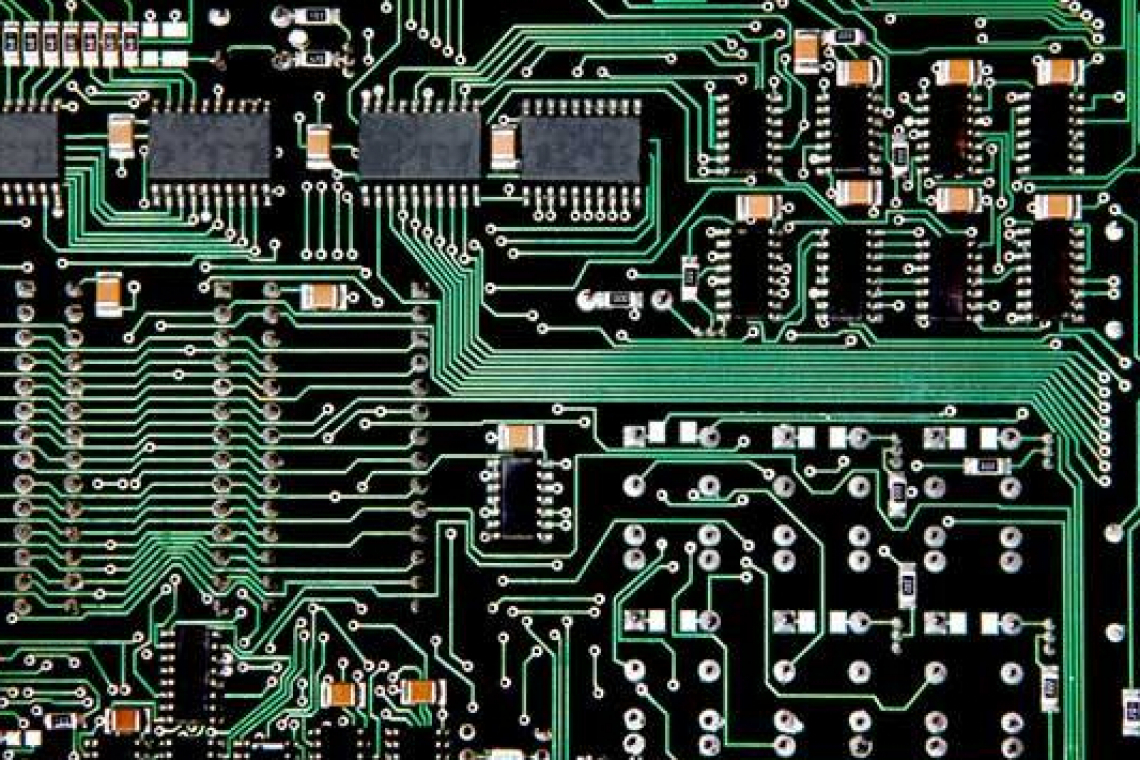Although the often used term 'turning point' sounds a little outdated, the ongoing process of replacing the PCB EDA software Eagle with Autodesk Fusion 360 can be seen as a turning point. A pioneer of computer-aided PCB design has to make way for a more contemporary software package.
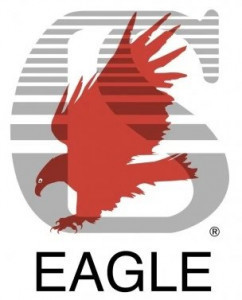 Fig. 2: CADSoft chose the eagle as the logo for its PCB design softwareTheinternational scene for PCB design software is currently in a state of flux. In Plus 3/2024, for example, the new free CAD tool LibrePCB 1.0 was presented. It is probably the latest EDA software for PCBs on the international market, as the fully usable release 1.0 was not advertised by Swiss electrical engineer Urban Bruhin until 2023.
Fig. 2: CADSoft chose the eagle as the logo for its PCB design softwareTheinternational scene for PCB design software is currently in a state of flux. In Plus 3/2024, for example, the new free CAD tool LibrePCB 1.0 was presented. It is probably the latest EDA software for PCBs on the international market, as the fully usable release 1.0 was not advertised by Swiss electrical engineer Urban Bruhin until 2023.
In mid-2023, an announcement from the US company Autodesk raised eyebrows, suggesting further changes in the PCB EDA software market: the company's PCB design tool Eagle was discontinued(Fig. 1, 2). In spring 2024, the further procedure for Eagle was specified. Autodesk will gradually discontinue the internationally widely used PCB design tool or continue to offer parts of it as part of its own software package Autodesk Fusion 360 (including Autodesk Fusion Electronics). The company advertises the latter very ambitiously with these words: "Autodesk Fusion is not just CAD, but the future of design and manufacturing.
One can take from this slogan the hidden message that Eagle does not represent the future from the provider's point of view and is therefore being discontinued. It is therefore no longer worthwhile for Autodesk to invest in the further development of Eagle itself in the future and the company is concentrating on its own product portfolio.
Further information on the discontinuation process is provided below [1]. This approach by the Americans was to be expected long beforehand, as Autodesk, which was founded in 1982 and is based in San Francisco, is in fact a giant in the design sector with 13,700 employees worldwide (as of January 2023) and is broadly positioned for all possible design applications in a wide range of technical fields(Fig. 3). Turnover amounted to around 5 billion dollars in 2023. Autodesk offers 92 types of software tools, which are mainly assigned to four areas:
- Architecture, Engineering and Construction
- Product development and manufacturing
- Media and entertainment
- Workflows
Autodesk Fusion 360 falls into the product development and manufacturing area of the company's portfolio, which also includes five additional Fusion add-on tools that are paid for separately. Examples: Fusion Signal Integrity Extension, Fusion 360 for Product Design, Fusion 360 for Manufacturing, Fusion Design Extension.
In order to understand the provider's decision to discontinue Eagle, it should be noted that the Eagle tool, which was first released in 1988 by the German company CADSoft Computer, is still offered by Autodesk in an enhanced form, parallel to the EDA software package Autodesk Fusion, which was created by Autodesk itself in 2013. However, previous usage variants have stipulated since 2020 that Eagle was only available in a package with an Autodesk Fusion subscription. This can also be interpreted as a way of introducing the many users and potential interested parties (including German users) to the company's own CAD products via the 'detour' of Eagle and prophylactically retaining them. This is what US-American methods of market development look like. The decision was made to facilitate the integration of Eagle into other Autodesk products and - according to Autodesk itself - to offer users a seamless and improved design experience. In other words: Autodesk has probably learned and benefited a lot from the long continuation of Eagle in terms of content and has now initiated the final phase for the 'third-party product' Eagle. The large Eagle user community has certainly also been useful in this learning process over the years.
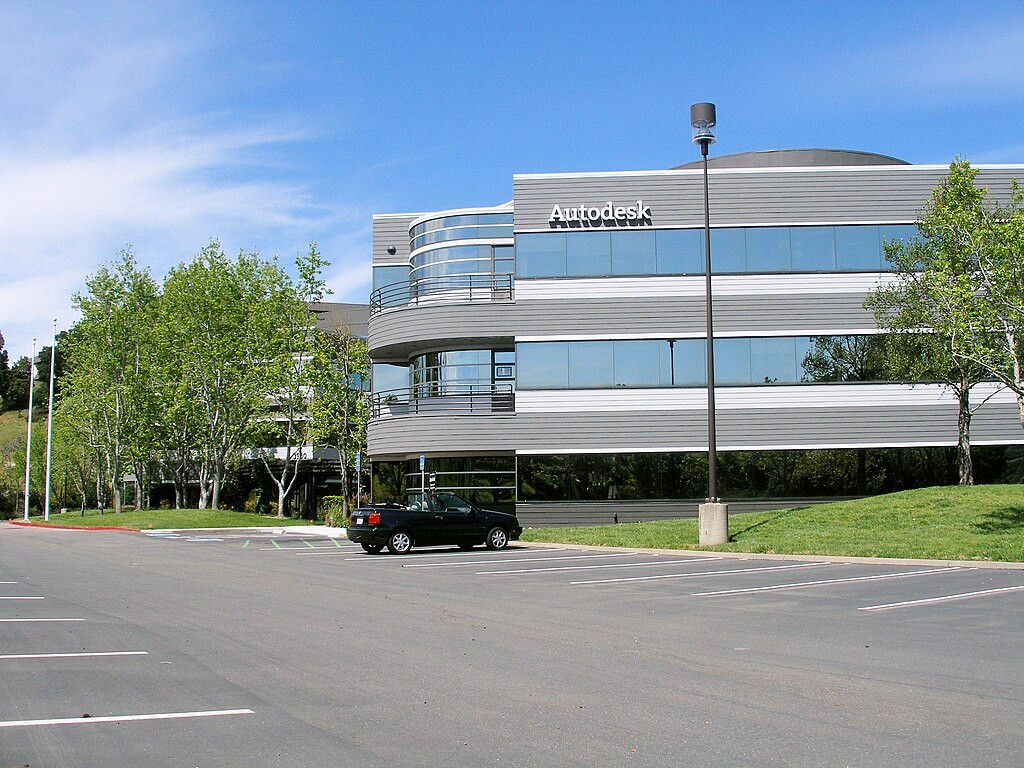 Fig. 3: Autodesk headquarters in San Francisco
Fig. 3: Autodesk headquarters in San Francisco
An era comes to an end
First launched in 1988, Eagle is probably one of the oldest PCB design tools still in use on the market today, making it one of the pioneers of the industry. In Germany, where the product originated, the tool was widely used. This should be reason enough to briefly outline the development of the software once again. Wikipedia writes the following [2]:
Eagle is a powerful EDA program from CADSoft Computer for the creation of printed circuit boards. The name is an initial word formed from 'Easily Applicable Graphical Layout Editor'. Eagle and the company CADSoft were sold to the British company Premier Farnell, a distributor of electronic components, in September 2009. In June 2016, Autodesk acquired the rights to the tool. In the meantime, it is no longer being developed and is now, as first announced in mid-2023, being 'wound up' by Autodesk. So much for the company's history.
From a technical perspective, the following can be added:
- 1988: The first version of Eagle was a 16-bit PCB design application for DOS. Initially, the software consisted only of a layout editor with parts libraries. Later, an auto-router module was added as an optional component
- 1991: Eagle 2.0 was supplemented by a circuit diagram editor
- 2015: A special version of Eagle 4.09r2 was released by CadSoft to facilitate installation under Windows 7
Today, the software consists of several components: Layout Editor, Schematic Editor, Autorouter, CAM tool and component libraries. It has been made available for the Microsoft Windows, Linux and OS X/macOS platforms. The current version is 9.6.2. With version 6, the provider switched from a proprietary data format for circuit diagrams and layouts, among other things, to an XML data format, thus moving closer to the IPC. From version 8 (2020), Eagle was only available as a subscription together with Autodesk Fusion 360. In addition, an internet connection was required every 30 days to confirm licensing.
As of 2017, Eagle was offered with the time-limited licenses shown in Table 1. Until 2017, the tool was sold as a perpetual product in versions with different features. There were eight different license versions at the time: Standard, Premium, Ultimate, Premium LS, Ultimate LS, Express, Educational, Maker, which was then reduced (simplified) to the four versions listed in the table from 2017. Only Eagle Premium and Eagle Ultimate were available as multi-user licenses.
|
Version |
Schematics per project |
Number of layers |
Size of the circuit board |
commercial / non-commercial |
Cost per month |
Cost per year |
|
Free |
2 |
2 |
80cm² |
only individuals and only non-commercial |
free of charge |
free of charge |
|
premium |
999 |
16 |
4m² |
any |
65 $ |
520 $ |
|
standard (not for new customers) |
99 |
4 |
160cm² |
any |
15 $ |
100 $ |
|
Student and teacher |
999 |
16 |
4m² |
for teaching only |
free of charge |
free of charge |
Gradual disengagement
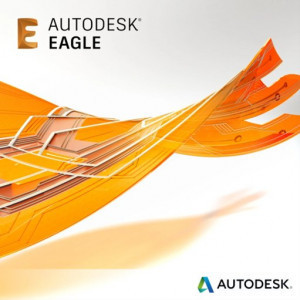 Fig. 4: Changed Eagle logo from AutodeskThechanges announced by Autodesk regarding Eagle since 2023 can also be seen as the provider's efforts to rationalize and adapt to the changing market for EDA software. Autodesk has planned a period of just over two years for the gradual phasing out of the respective usage type of Eagle (Fig. 4).
Fig. 4: Changed Eagle logo from AutodeskThechanges announced by Autodesk regarding Eagle since 2023 can also be seen as the provider's efforts to rationalize and adapt to the changing market for EDA software. Autodesk has planned a period of just over two years for the gradual phasing out of the respective usage type of Eagle (Fig. 4).
Under [1], for example, the following change stages (selection) are given:
- March 26, 2024: Autodesk Fusion with Eagle Premium with monthly terms will no longer be offered for renewal
- March 31, 2025: Annual terms of Autodesk Fusion with Eagle Standard can no longer be extended after this date
- June 7, 2026: Eagle entitlements will no longer be available under the Autodesk Fusion subscription and will no longer be supported. Eagle can no longer be downloaded and installed from the Autodesk Account user account. Licensing for Eagle will no longer be active
If you look at a report from June 29, 2023 at [3], slightly different stages of change are mentioned until the final discontinuation of Eagle in June 2026, depending on the type of Autodesk Eagle product and the subscription periods. It seems difficult to get the right perspective on the changes right away.
Gray rumors
This topic is also interesting for the pioneering days of CAD software. The development history of design software was not entirely untainted in the past, as the following example shows. In its issue 36/1992, Der Spiegel wrote under the title 'The Trojan Horse': "In 1992, CADSoft sent out thousands of diskettes with a demo version of the Eagle software, as was customary at the time. In addition to the demo version, this diskette contained a "spy program" that was supposed to detect copies made in violation of copyright law. If such suspected pirate copies were discovered, users were encouraged to disclose their address by means of a supposed order form for a free manual. They then received mail from CADSoft lawyers accusing them of using pirated copies [2].
Current usage variants of Eagle
If you search for the current terms of use for Eagle on the Autodesk website, you will find that Eagle is only available with a subscription to Autodesk Fusion 360 [4]. The prices listed in Table 2 are therefore the prices for the purchase of the basic version of Autodesk Fusion per year. They include Eagle. However, there are also subscription periods of different lengths: 3 years - 2232 €, 1 year - 744 €, 1 month - 96 €. Eagle is offered in three license or subscription variants: Eagle Standard, Eagle Premium and Eagle Free. Table 2 roughly shows the scope of services of the respective variants. If you compare the prices listed here with those in Table 1, you can see significant price increases for Eagle users compared to 2017. However, it must also be taken into account that the performance of the tool has increased since then and that Autodesk Fusion is being purchased at the same time.
|
Eagle Premium |
Eagle Standard |
Eagle Free |
|
For professional users |
For average daily requirements |
For hobby users with limited functions |
|
744 €/year/per user |
744 €/year/per user |
Free of charge |
|
999 schematic sheets 16 signal or plane layers Unlimited space for circuit boards |
99 schematic sheets 4 signal or plane layers 160 cm2 (24.8 inch2) space for circuit boards |
2 circuit diagram sheets 2 signal or plane layers 80 cm2 (12.4 in2) space for PCBs |
|
Production level products and advanced board designs Complex multi-layer PCB layouts Multi-page and hierarchical schematics Create and manage library content (team) |
Product designs and basic electronics Multi-layer PCB layouts Multi-page schematics Creating and managing library content (individual) |
Hobby users dealing with plug-in boards and electronics Single-sided or double-sided layer PCB layouts Basic circuit diagrams Access to library content |
Reasons for Autodesk Fusion 360
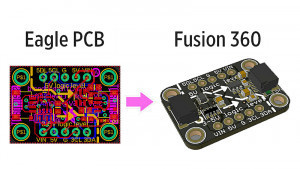 Fig. 5: Symbolic transition from Eagle to Autodesk FusionAutodeskFusion 360 was officially launched on September 24, 2013. It is a comprehensive cloud-based 3D CAD, CAM, CAE and PCB software that enables engineers, designers and manufacturers to collaborate seamlessly and realize complex projects. Fusion 360 has inherited many features from Inventor Fusion and provides a flexible and scalable environment for designing and manufacturing products(Fig. 5).
Fig. 5: Symbolic transition from Eagle to Autodesk FusionAutodeskFusion 360 was officially launched on September 24, 2013. It is a comprehensive cloud-based 3D CAD, CAM, CAE and PCB software that enables engineers, designers and manufacturers to collaborate seamlessly and realize complex projects. Fusion 360 has inherited many features from Inventor Fusion and provides a flexible and scalable environment for designing and manufacturing products(Fig. 5).
In [3] the following is explained: "Product development and manufacturing are subject to constant change. That's why in the early days after Autodesk acquired Eagle, we openly stated our intention to bring electronics, mechanical design and manufacturing under one roof. Our ultimate goal has always been to provide users with the tools they really need to approach comprehensive product development in a way that was simply not possible before. Now we are taking the next step to make this vision a reality. Building on Eagle's schematic capture and PCB layout capabilities, the Autodesk team has integrated and extended PCB design and manufacturing capabilities into Fusion 360. The company brings this together with mechanical design and simulation, industrial design, surface modeling, CNC machining, injection molding, sheet nesting, laser cutting, 3D printing and more - the entire product development process - in a single complex tool. Here you will find all the tools you need in one place to design, manufacture and collaborate intelligently. The end goal is to make you more productive than ever before."
Autodesk Fusion 360 replaces Eagle
Actually, that subheading is wrong. Autodesk Fusion is not simply replacing Eagle, but is in fact ushering in a new era for Eagle users, who will have to get used to a comprehensive, hierarchically organized tool system. Example: Autodesk Fusion is part of Autodesk's product development and manufacturing software division (53 different tools) and itself contains 10 tools. These are as follows:
- 3D design and modeling
- Manufacturing
- Electronics
- data management
- collaboration
- Additive manufacturing
- Generative design
- simulation
- Documentation
- Autodesk Fusion Extension
Autodesk Fusion Electronics itself contains these nine parts:
- Integrated electronics
- Circuit diagram capture
- PCB layout
- PCB manufacturing (CAM)
- Manufacturing-oriented design/design rule check
- MCAD/ECAD standardization
- Component library management
- SPICE simulation
- Cooling for electronic devices
A note: In Autodesk's presentations, only 'Autodesk Fusion' is usually written, but sometimes also 'Autodesk Fusion 360', which can be somewhat confusing for new users. However, the author could not discover any difference in content in the different spelling.
In summary, the following can be stated:
Autodesk Fusion 360 combines electronic and mechanical design, simulation, collaboration and machining, bringing together the entire product development process in a single software solution. Fusion 360 provides a unified solution for ECAD and MCAD design workflows, unifying these isolated design domains into one integrated environment. ECAD data is exactly the same as MCAD data, eliminating the need to work with multiple file exchange formats such as STEP, IGES, IDF, etc.
Autodesk recommends that Eagle users transition to Autodesk Fusion 360 as a replacement for the discontinuation to gain full access to Autodesk's electronics workspace. This is facilitated by the fact that Eagle files are fully compatible with the Fusion 360 electronics workspace. All commands used in Eagle are available in the Fusion user interface. Autodesk offers a migration guide, comprehensive tutorials, documentation and a supportive online community to help existing Eagle users migrate to the new software tools. In [5], for example, the basic steps are presented. According to the provider, Fusion 360 marks the end of the electronic point solution as practiced at Eagle. It is the beginning of a new era of multidirectional end-to-end product design and multidirectional product manufacturing from Autodesk. Autodesk states that around 4.6 million professionals worldwide use Fusion 360, including Japanese companies such as Yamaha, Toyota and Panasonic.
Changed license system
Eagle users will have to adjust to a slightly different subscription system than they are used to. Autodesk Fusion 360 offers a variety of licenses to best suit different design and manufacturing goals, be it for design, machining, electronics, 3D printing or all of the above. There are five different types of offerings [6]:
- 30-day free trial
- Commercial subscription
- Start-up (start-up)
- Personal (private)
- Education
A basic commercial subscription to Autodesk Fusion 360 includes fully integrated CAD, CAM, CAE and PCB functionality and, as with Eagle Premium, up to 999 schematics, 16 layers and an unlimited PCB area. Recommendations for the migration of design and library files from Autodesk Eagle to Fusion 360 Electronics are given in [5]. However, different prices are charged for licenses in the USA and Germany, for example. For example, on 3/16/2014, the commercial 1-year license in the US cost $680, but €744 in Germany.
Work focus for Autodesk Fusion 360 for 2024
In 2024, the company is focusing on three main areas for Autodesk Fusion for 2024 according to the Autodesk Fusion Roadmap:
- Cloud data and collaboration, Fusion strives to connect data, unify workflows and increase quality and performance. Improvements in management, introduction of Bill of Materials (BOM) and enhanced API capabilities are part of this effort
- Core features: Fusion will continue to strengthen its foundational features to provide a more mature and resilient experience
- AI and automation: Fusion will develop AI and automation capabilities to optimize the design and manufacturing process
Under [7], the targeted improvements and further development directions of Autodesk Fusion are presented and explained in detail. Autodesk AI, for example, is currently under development. The aim here is to improve creative exploration and problem solving, automate tedious and repetitive tasks and analyze project data to gain predictive insights. Autodesk AI works like an assistant with engineers to make otherwise time-consuming tasks easier and help them get there faster.
The competitors are ready
Autodesk's offer to its existing Eagle customers to switch to the rather complex fusion tool system is unlikely to be welcomed by all PCB designers. These range from hobby designers and small engineering offices to the design departments of large companies and international corporations.
Other CAD software providers are already positioning themselves here, ready to take on the 'renegade' or undecided Eagle users. One example: In mid-March 2024, the engineering firm Friedrich, based in Eichenzell, sent out an email offering Eagle users in German, English and French the opportunity to 'switch' to the company's Target 3000 CAD tool. It said, among other things:
"Target offers future and investment security. Show that you can save 20% by switching from Eagle to Target: Eagle goes, but Target 3001 stays. Autodesk has discontinued Eagle completely."
In fact, the engineering firm could be successful with its offer, because German designers in particular might like the idea of using software created in Germany again and being supported by a German company that is easy to reach by phone and also has an experienced designer community. Target 3001 is available in two basic versions: commercial and non-commercial use. However, the pricing conditions are different to Autodesk: all users, whether hobbyists, students or companies, have to pay. The commercial user spectrum comprises six levels, with purchase prices ranging from Smart (€ 276.04) to Economy (€ 922.85) and MID (€ 9471). It is a differently graded and structured license system. It will be interesting to see which Eagle users like more: the domestic EDA tool provider or the US-based global company with its significantly larger product range. In the case of Friedrich, it could be seen as a return of Eagle users to the roots of Eagle, namely to the home country of CADSoft.
References:
[1] www.autodesk.de/products (accessed 18.3.24).
[2] https://de.wikipedia.org/wiki/Eagle_(Software) (Retrieved 14.3.24).
[3] www.autodesk.com/products/fusion-360/blog/de/future-of-autodesk-eagle-fusion-360-electronics/ (Retrieved 14.3.24).
[4] www.autodesk.de/compare/eagle-vs-eagle-premium (Retrieved 15.3.24).
[5] www.autodesk.com/products/fusion-360/blog/migrate-from-eagle-to-fusion-360-electronics-tutorial/ (retrieved 15.3.24).
[6] www.autodesk.com/products/fusion-360/blog/de/fusion-360-license-types/ (retrieved 15.3.24).
[7] www.autodesk.com/products/fusion-360/blog/2024-autodesk-fusion-roadmap/ (Retrieved 15.3.24).

